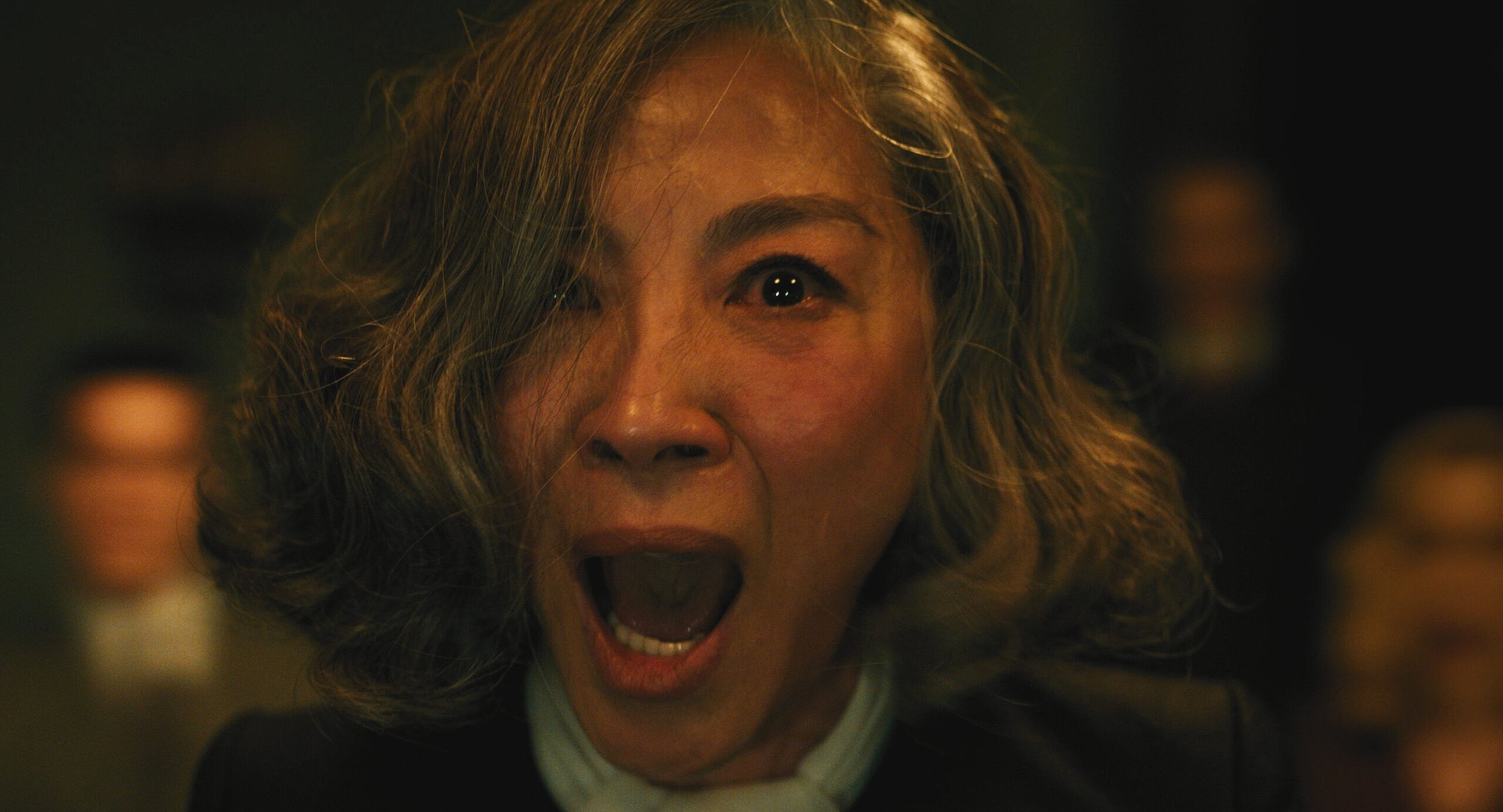Review: the residue of loss in A Haunting in Venice
Italy, 1947. Hercule Poirot (Kenneth Branagh) has retired from his shenanigans as a mustache-twirling detective and lives in an austere villa overlooking the canals of Venice. So detached is he from the goings-on of the outer world that an old acquaintance, mystery novelist Ariadne Oliver (Tina Fey), drops by to inform him that today is All Hallows’ Eve – and that after a bit of merrymaking at a neighboring palazzo, grieving opera singer Rowena Drake (Kelly Reilly) will be hosting a séance with notorious medium Joyce Reynolds (Michelle Yeoh) in an attempt to commune with her daughter, who died of suicide a year ago.
Oliver proposes that Poirot come along to debunk Reynolds’ practices, and expose her as a fraud. He does so, but as the evening wears on, the world’s most famous detective is taken aback by a series of inexplicable, if not supernatural occurrences.
A Haunting in Venice is a richly satisfying murder mystery that continues Kenneth Branagh’s streak as a dependable, intelligent and sympathetic director of Anglophilic entertainments. One of the more improbable franchises to have sprung up in the last decade, his adaptations of Agatha Christie novels – including Murder on the Orient Express (2017) and Death on the Nile (‘22) – have proven to be welcome bursts of old school glamor in a Marvel-saturated metaverse. Featuring lush, delectable art direction and smart, considered cinematography, Branagh’s movies tend to disrupt the drudgery of Hollywood’s off-seasons (Thanksgiving, Valentine’s Day, etc) and give those of us who crave a bit of human grit in our movies something to look forward to – or, at the very least, something to count on.
Granted, Christie’s plots (particularly her resolutions) tend to run towards the absurd, if not downright implausible, and any suspense usually tapers off once Poirot starts the interminable process of interviewing his suspects. But one has to give Branagh credit for recognizing that the mystery writer’s scenarios still play – that, if thrown across a big screen with a constellation of starry performers, they still have the power to entrance.
This latest entry is his best demonstration of that fact so far. The Venetian scenery alone is worth the price of admission, and 20th Century’s CGI department turns a far neater trick in lending the City of Canals a 1940s feel than it did with Death on the Nile’s laughably Crayola-colored riverbanks. Director of photography Haris Zambarloukos is acrobatic in his placement of the camera, generating a comprehensive sense of location – which is a blessing, because John Paul Kelly’s production design and Chris Stephenson’s art direction are exquisite.
Indeed, A Haunting in Venice is a staggeringly beautiful movie. Its aesthetic is as cohesive as its emotional life, which, in turn, may be attributed to the ensemble cast: Branagh and Yeoh are masterly, as is to be expected, as two sides of the same postmortem coin (“We’ve both seen too much of death,” medium muses to detective), but Reilly is equally commanding in her portrait of delicate yet feverish mourning. Fey displays more unironic pathos than I’ve ever seen from her before, while Jamie Dornan is excellent yet a bit too well-fed to pass as a grieving doctor prone to bouts of violent depression.
Elsewhere, Camille Cottin and Kyle Allen are stellar – razor-sharp as, respectively, a superstitious housekeeper and a tempestuous ex-fiancé – while Emma Laird, Ali Khan, and Riccardo Scamarcio are superb, bringing up the rear as a brooding host of shifty staffers.
But the real all-star here is Jude Hill, building on his breakthrough role in Branagh’s Oscar-winning Belfast (‘21) as the precocious, Sixth Sense-adjacent offspring of Dornan’s withering doctor. Clutching a volume of Edgar Allen Poe in one hand, caressing his father’s troubled head with the other, Hill portrays a child who is burdened beyond his years and intuitive beyond his lifespan with the composure and tact of John Gielgud or Spencer Tracy.
This kid has what it takes, and Branagh is wise to continue working with him.
It’s no small feat, either, that Hill maintained his composure in the face of such a spooky storyline. A Haunting in Venice is genuinely frightening. I don’t do well with horror movies, and saw this one in a near-empty theater; needless to say, I kept turning in my seat to check the empty rows behind me – just to make sure my personal space wasn’t being encroached by some sinister demon, or usher. My disquiet was only accentuated by Tomas Blazukas’ sound design, which takes advantage of a Medieval palazzo’s cavernous size to build an architecture of echoes: faint voices, creaking hinges, lapping water. You feel as though the house is breathing down your neck.
Of course, in the end, Poirot wraps everything up in a tidy little bow – or, if you will, mustache protector – yet I was gratified to find that Venice concludes with emotional weight, too. It’s a distinct accomplishment of Branagh’s recent career that beneath the dowdy thrills and hackneyed, Grand-Tour exoticism of Agatha Christie’s whodunnits, he’s identified and elucidated a theme of human grief: what it does to us, and what it has the power to make us do.
All of these characters are haunted, whether by ghosts or memories. A Haunting in Venice is as affecting a meditation on loss and its residue as I’ve ever seen in a movie theater – and it may be the most fun.
